Irish writer Alister McAllister [1877-1943] wrote several plays under the pseudonym Anthony Wharton and later, after moving to England, wrote a series of mystery novels using the pseudonym Lynn Brock.
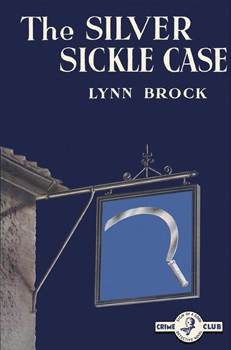
The Silver Sickle Case is a 1938 detective novel by the Irish-born writer Lynn Brock. Best known for his Colonel Gore series of mysteries, the novel introduced an alternative detective character Sergeant Venn of Scotland Yard assisted by Detective Constable Kither. It was followed by two sequels.
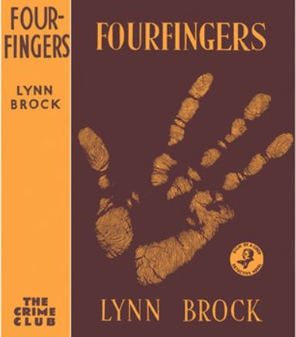
Fourfingers is a 1939 mystery detective novel by the Irish-born writer Lynn Brock. It was the second in his trilogy featuring the characters of Scotland Yard detective Sergeant Venn and Constable Kither. Writing in the Times Literary Supplement, reviewer Maurice Percy Ashley observed "Mr. Lynn Brock’s new book, Fourfingers, good though it is, is so closely written and so full of incident that it is a little heavy going for the reader in search of intellectual relaxation."

The Riddle of the Roost is a 1939 mystery detective novel by the Irish-born writer Lynn Brock. It was the third and last in his trilogy featuring the characters of Scotland Yard detective Sergeant Venn and Constable Kither. It was Brock's penultimate novel, followed the next year by The Stoat a final entry into the series of his best-known character Colonel Gore.
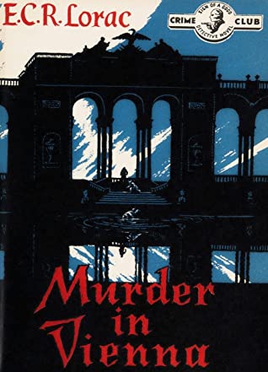
Murder in Vienna is a 1956 detective novel by E.C.R. Lorac, the pen name of the British writer Edith Caroline Rivett. It is the forty second in her long-running series featuring Chief Inspector MacDonald of Scotland Yard, one of the more conventional detectives of the Golden Age of Detective Fiction. It has an unusual foreign setting, post-war Vienna still occupied by the Allies, compared to the rest of the series which generally takes place in London or the English countryside. Maurice Richardson reviewing the novel for The Observer described it as the "usual solid job".
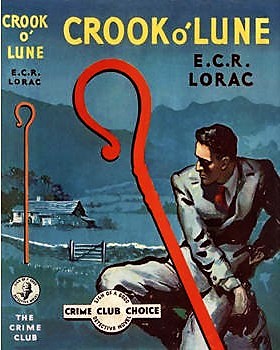
Crook O'Lune is a 1953 detective novel by E. C. R. Lorac, the pen name of the British writer Edith Caroline Rivett. It is the thirty eighth in her long-running series featuring Chief Inspector MacDonald of Scotland Yard, one of the more orthodox detectives of the Golden Age of Detective Fiction. It was published in the United States by Doubleday under the alternative title of Shepherd's Crook.

Death at Dyke's Corner is a 1940 detective novel by E.C.R. Lorac, the pen name of the British writer Edith Caroline Rivett. It is the nineteenth in her long-running series featuring Chief Inspector MacDonald of Scotland Yard, a Golden Age detective who relies on standard police procedure to solve his cases.
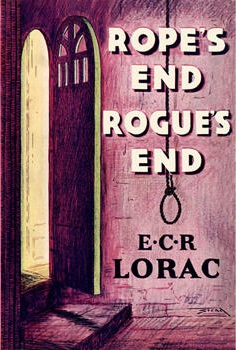
Rope's End, Rogue's End is a 1942 detective novel by E.C.R. Lorac, the pen name of the British writer Edith Caroline Rivett. It is the twenty first in her long-running series featuring Chief Inspector MacDonald of Scotland Yard, a Golden Age detective who relies on standard police procedure to solve his cases. It takes the form of the country house mystery, popular during the era.
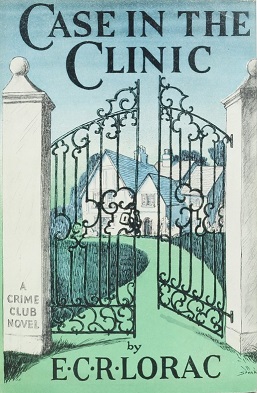
Case in the Clinic is a 1941 detective novel by E.C.R. Lorac, the pen name of the British writer Edith Caroline Rivett. It is the twentieth in her long-running series featuring Chief Inspector MacDonald of Scotland Yard, a Golden Age detective who relies on standard police procedure to solve his cases.
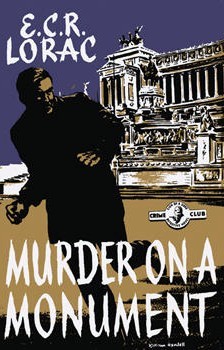
Murder on a Monument is a 1958 detective novel by E.C.R. Lorac, the pen name of the British writer Edith Caroline Rivett. It is the forty-fifth in her long-running series featuring Superintendent MacDonald of Scotland Yard, one of the more conventional detectives of the Golden Age of Detective Fiction. Along with Murder in Vienna, it was one of the rare ventures abroad for the series, which generally took place in London and rural England. It was the penultimate novel featuring MacDonald to be published during Lorac's lifetime.

Death of an Author is a 1935 detective novel by E.C.R. Lorac, the pen name of the British writer Edith Caroline Rivett. It is a rare standalone book by Lorac, not featuring Chief Inspector MacDonald of Scotland Yard who appeared in a lengthy series of novels during the Golden Age of Detective Fiction. It was her final novel published by Sampson Low before, she switched to the more prestigious Collins Crime Club with whom she remained for the rest of her career.
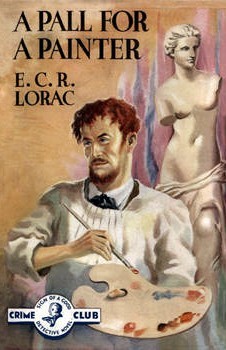
A Pall for a Painter is a 1936 detective novel by E.C.R. Lorac, the pen name of the British writer Edith Caroline Rivett. It is the tenth in her long-running series featuring Chief Inspector MacDonald of Scotland Yard, a Golden Age detective who relies on standard police procedure to solve his cases.

Crime Counter Crime is a 1936 detective novel by E.C.R. Lorac, the pen name of the British writer Edith Caroline Rivett. It is the ninth in her long-running series featuring Chief Inspector MacDonald of Scotland Yard, a Golden Age detective who relies on standard police procedure to solve his cases. It was her first novel published by Collins Crime Club after switching from Sampson Low, partly on the success of the previous entry in the series The Organ Speaks. Collins then published the remainder the series.
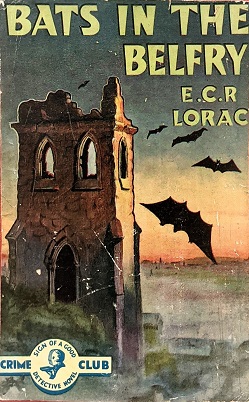
Bats in the Belfry is a 1937 detective novel by E. C. R. Lorac, the pen name of the British writer Edith Caroline Rivett. It is the thirteenth in her long-running series featuring Chief Inspector MacDonald of Scotland Yard, a Golden Age detective who relies on standard police procedure to solve his cases. Lorac wrote it in the summer of 1936 while staying with her mother at Westward Ho! in North Devon. Originally published by Collins Crime Club, it was reissued in 2018 by the British Library Publishing as part of a group of crime novels from the Golden Age of Detective Fiction.

Relative to Poison is a 1947 detective novel by E.C.R. Lorac, the pen name of the British writer Edith Caroline Rivett. It is the twenty ninth in her long-running series featuring Chief Inspector MacDonald of Scotland Yard, one of the detectives of the Golden Age of Detective Fiction who relies on standard police procedure to solve his cases.
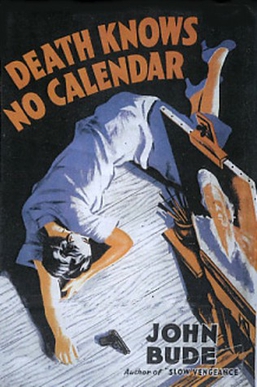
Death Knows No Calendar is a 1942 detective novel by the British writer John Bude. It was a stand-alone novel rather than one featuring his regular detective Superintendent Meredith. In this case the investigation is led by a former army officer Major Boddy. It takes the former of a locked room mystery with a closed circle of suspects, both popular variations of the genre during the period. Originally published by Cassell, in 2020 it was reissued by the British Library Publishing in a single edition with another Bude novel Death in White Pyjamas, as part of a series of republished crime novels from the Golden Age of Detective Fiction.

The Lake District Murder is a 1935 detective novel by the British writer John Bude. It is the first in a series of novels featuring Chief Inspector Meredith, promoted at the end of case to Superintendent. Set in the Lake District of Northern England, it shows the influence of Freeman Wills Crofts's Inspector French novels by featuring a detective who methodically breaks down the alibis of his suspects. In 2014 it was reissued by the British Library Publishing as part of a group of republished crime novels from the Golden Age of Detective Fiction.

Nightmare is a 1932 thriller novel by the Irish-born writer Lynn Brock. It is an inverted detective story, and a stand alone work for an author best known for his series featuring the Golden Age detective Colonel Gore.
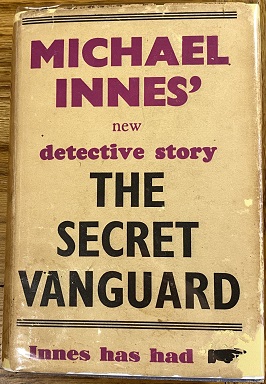
The Secret Vanguard is a 1940 thriller novel by the British writer Michael Innes. It is the fifth in his series featuring John Appleby, a young Detective Inspector in the Metropolitan Police. The novel takes place in the early stages of the Second World War, and functions closer to a mystery spy novel than the traditional detective novel.

The Theft of the Iron Dogs is a 1946 mystery detective novel by E.C.R. Lorac, the pen name of the British writer Edith Caroline Rivett. It is the twenty eighth in her series featuring Chief Inspector MacDonald of Scotland Yard. Originally published by Collins Crime Club, it was reissued in 2023 by the British Library Publishing as part of a group of crime novels from the Golden Age of Detective Fiction. It was published in the United States in 1947 under the alternative title Murderer's Mistake. Like the earlier Fell Murder it is set in the rural Lunesdale area of Lancashire.



















